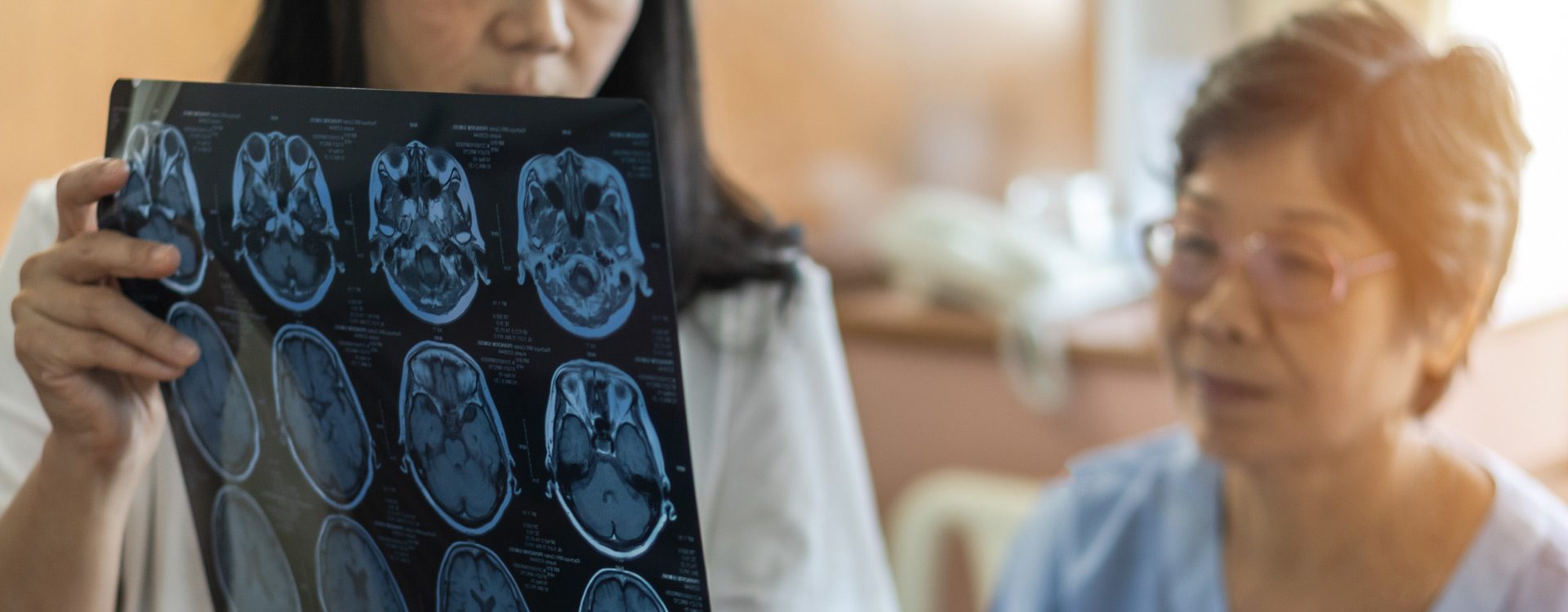Stroke is an issue that impacts countless women across the country. While stroke symptoms often look similar across genders, the outcomes and risks for women tell a more complex story.
Learn more about why stroke affects women differently, how risk can be reduced, and the essential role early neurological care plays in long-term recovery.
Stroke Outcomes in Women
Stroke symptoms, such as sudden weakness, difficulty speaking, and facial drooping tend to be the same in women and men. But when it comes to outcomes, women often face a tougher road.
“Women have higher survival rates after ischemic strokes,” Dr. Michele Morgan, board-certified-neurologist, explains, referring to strokes caused by blocked blood flow to the brain. “But they also tend to experience higher rates of disability and lower quality of life after a stroke compared to men.”
One reason may lie in disparities in post-stroke care. Research indicates that women are less likely to receive preventive treatments such as blood thinners, aspirin, and cholesterol-lowering medications. These gaps in care are an active focus in the growing field of women’s neurology, which seeks to better understand and address the biological and social factors that shape women’s health outcomes.
Preventing the First Stroke
When it comes to stroke prevention, much of the focus has historically been on preventing a second stroke rather than stopping the first one from happening. But Dr. Morgan emphasizes the importance of proactive care.
“Primary prevention begins with identifying and managing vascular risk factors early,” she says. “Lifestyle changes play a major role. Heart-healthy eating regular physical activity, and avoiding tobacco and excessive alcohol are foundational.”
Key clinical screenings include:
- Blood pressure checks (the leading modifiable risk factor for stroke)
- Blood sugar tests
- Cholesterol panels
Annual wellness visits with a primary care provider, or in the case of younger women, a gynecologist, are vital in identifying these risks before they escalate.
However, Dr. Morgan acknowledges a significant barrier: access. Rising healthcare costs and limited insurance coverage often make preventive care less accessible an issue she believes must be addressed to reduce stroke rates across all populations.
Unique Risks: Hormones and Pregnancy
Stroke risk in women is closely tied to hormonal health. “The common denominator here is estrogen,” Dr. Morgan notes. “Exogenous estrogen such as that found in birth control or hormone replacement therapy increases stroke risk. On the other hand, endogenous estrogen, the kind your body naturally produces, is thought to be protective.”
Pregnancy itself is a prothrombotic state, meaning the body is more prone to forming blood clots. Conditions like preeclampsia and eclampsia both marked by dangerously high blood pressure during pregnancy also increase the likelihood of stroke.
Additionally, migraines with aura (neurological symptoms that often precede or accompany the headache) are another risk factor more commonly seen in women.
From Diagnosis to Long-Term Care
As a neurologist, Dr. Morgan plays a critical role at multiple points in a patient’s stroke journey from initial diagnosis to long-term management.
“If a patient presents within a few hours of stroke onset, we can sometimes use clot-busting medications that significantly reduce long-term disability,” she says. “That’s why it’s crucial for a neurologist to be involved early.”
But neurologists don’t just treat the emergency. Dr. Morgan also monitors blood pressure, blood sugar, and overall vascular health what she calls the “vital signs of stroke prevention.”
While rehabilitation is often handled by specialized therapy teams, neurologists guide the coordination of care and address long-term neurological symptoms such as:
- Post-stroke pain or spasticity
- Cognitive and speech impairments
- Mood changes, including depression
Stroke is not just a men’s health issue it’s a significant threat to women, too. Understanding the unique risk factors women face, prioritizing prevention, and advocating for coordinated care are all essential steps in improving outcomes.
Whether it’s staying on top of blood pressure readings, scheduling routine wellness visits, or asking questions about the risks of hormone therapy, women have the power to protect their brain health.
For more information about stroke care at UNC Health Pardee, visit us here.
Need a primary care provider? Click here to find a Pardee BlueMD physician near you.
About Dr. Michele Morgan
Dr. Morgan’s path to neurology was inspired by a lifelong fascination with the brain, sparked by a middle school lesson on telepathy and solidified by personal medical experiences in her youth.
“I had spinal surgery as a preteen and was fortunate to be treated by a top-notch surgeon,” she recalls. “Later, my grandfather encouraged me to pursue medicine. I didn’t find my calling all at once—but through a series of experiences that led me to a career I love.”





